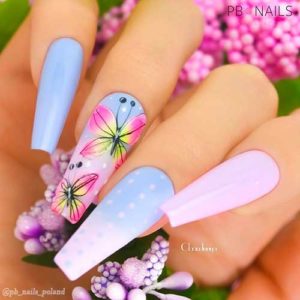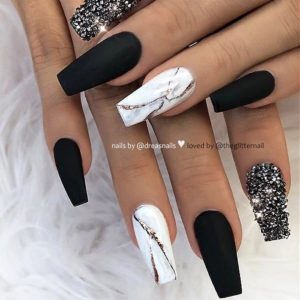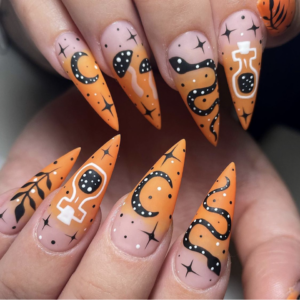Table of Contents
If you’re a regular at the nail salon, you’ve probably come across the term “nail fill.” But what does it really mean and why is it crucial for maintaining the health and appearance of your nails? In this article, we’ll delve into everything you need to know about nail fills, including their significance, advantages, various types, and proper aftercare.
Definition of Nail Fills: What You Need to Know
A nail fill is the process of filling in the gap between your natural nail and the artificial nail extensions. As your natural nails grow, the space between them and the extensions becomes more noticeable over time when you opt for acrylic or gel nails. This gap, if left unattended, can weaken your nails and make them more prone to breakage. Hence, getting a nail fill becomes essential for maintaining the integrity and strength of your nails.
Why Are Nail Fills Important?
Nail fills play a crucial role in maintaining the overall health of your nails. When there’s a gap between your natural nails and the extensions, it becomes easier for dirt, bacteria, and other harmful particles to accumulate, potentially leading to infections and various nail-related problems. By filling in this gap, you can prevent these issues and promote healthier nails.
Furthermore, getting a nail fill offers several benefits. It helps you save both time and money by extending the lifespan of your artificial nail extensions. Moreover, a nail fill ensures that your nails always look impeccable, adding to your overall appearance and boosting your confidence.
In the following sections, we’ll explore the process of getting a nail fill, the different types available, and the essential aftercare needed to ensure your nail fill lasts longer.
How to Get a Nail Fill: Step-by-Step Guide
Getting a nail fill is a simple process that involves filling in the gap between your natural nails and the artificial extensions. To achieve lasting and neat results, there are several steps you need to follow. Here’s a breakdown of the process:
Preparing for the Nail Fill
Before your nail fill appointment, it’s crucial to prepare your nails. Start by removing any old nail polish, dirt, or oil using a nail polish remover. Additionally, shape your nails to your preferred length and shape using a nail file. If you have any existing nail issues or infections, it’s best to address them before scheduling your nail fill appointment.
The Nail Fill Process
During the nail fill procedure, your nail technician will begin by buffing the surface of your artificial nails to eliminate any shine or gloss. This step ensures better adhesion of the new acrylic or gel.
Following that, a primer will be applied to your natural nails to ensure proper adherence of the acrylic or gel. Once the primer is in place, your technician will carefully fill in the gap between your natural nails and the extensions, smoothing out any bumps or lumps.
After the acrylic or gel has dried, your nails will be filed and shaped to your desired length and shape. Finally, a topcoat will be applied to add shine and protect your nails from chipping.
Materials and Tools Required
To carry out a nail fill, certain materials and tools are necessary. These include a nail file, nail polish remover, primer, acrylic or gel, topcoat, and a buffer. Rest assured, your nail technician will have all the required tools and materials, so there’s no need for you to bring anything.
Types of Nail Fills: Finding Your Perfect Match
There are three main types of nail fills to choose from: acrylic, gel, and dip powder. Each type boasts its unique characteristics and benefits, so understanding them is key in making the right choice for yourself.
Acrylic Nail Fills
Acrylic nail fills are the most common and widely used type. They involve applying a blend of a liquid and powder mixture to fill in the gap between your natural nails and the extensions. Acrylic nails are known for their durability, longevity, and easy maintenance, making them a popular choice among many individuals.
Gel Nail Fills
Gel nail fills entail applying a gel-like substance to bridge the gap between your natural nails and the extensions. Gel nails offer a more natural and flexible appearance compared to acrylic nails, making them an excellent option for those seeking a more understated look.
Dip Powder Nail Fills
Dip powder nail fills require the dipping of your nails in a powder that hardens with the help of a special activator. This type is known for its ease of application and long-lasting effects, making it particularly appealing for those seeking a fuss-free nail fill.
In the next section, we’ll outline the necessary aftercare practices to ensure your nail fill remains intact for an extended period.
Nail Fill Aftercare: The Key to Longevity
Proper aftercare is crucial in maintaining the longevity of your nail fill. Here are a few essential tips to ensure that your nail fill lasts longer:
- Avoid using your nails as tools to prevent unnecessary stress and potential damage.
- Apply cuticle oil regularly to keep your nails and surrounding skin hydrated.
- Use gloves when engaging in activities that may expose your nails to harsh chemicals or excessive moisture.
- Schedule regular appointments for maintenance and touch-ups to keep your nail fill looking fresh.
By following these simple aftercare practices, you can enjoy beautiful, long-lasting nails that showcase your personal style.
In conclusion, nail fills are vital for preserving the health and appearance of your nails. By understanding what a nail fill entails, the different types available, and implementing proper aftercare, you can enjoy healthy, strong, and stunning nails that will make heads turn.







